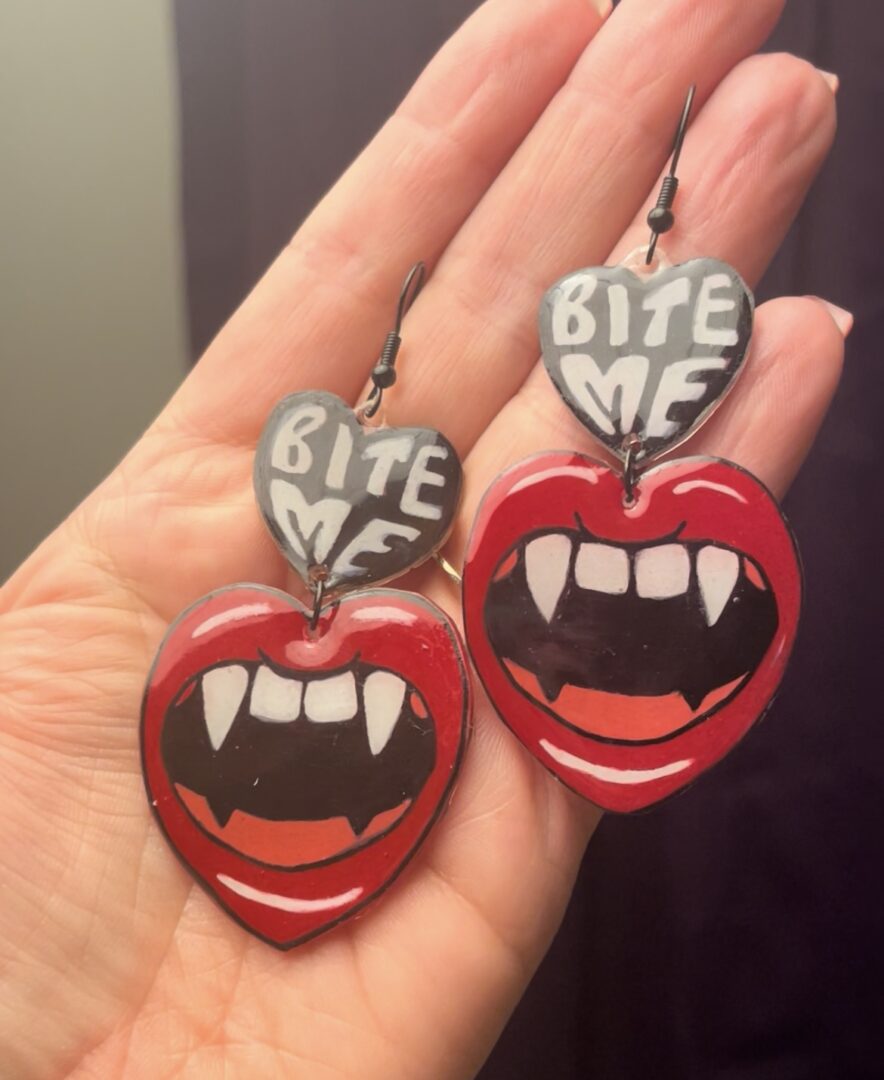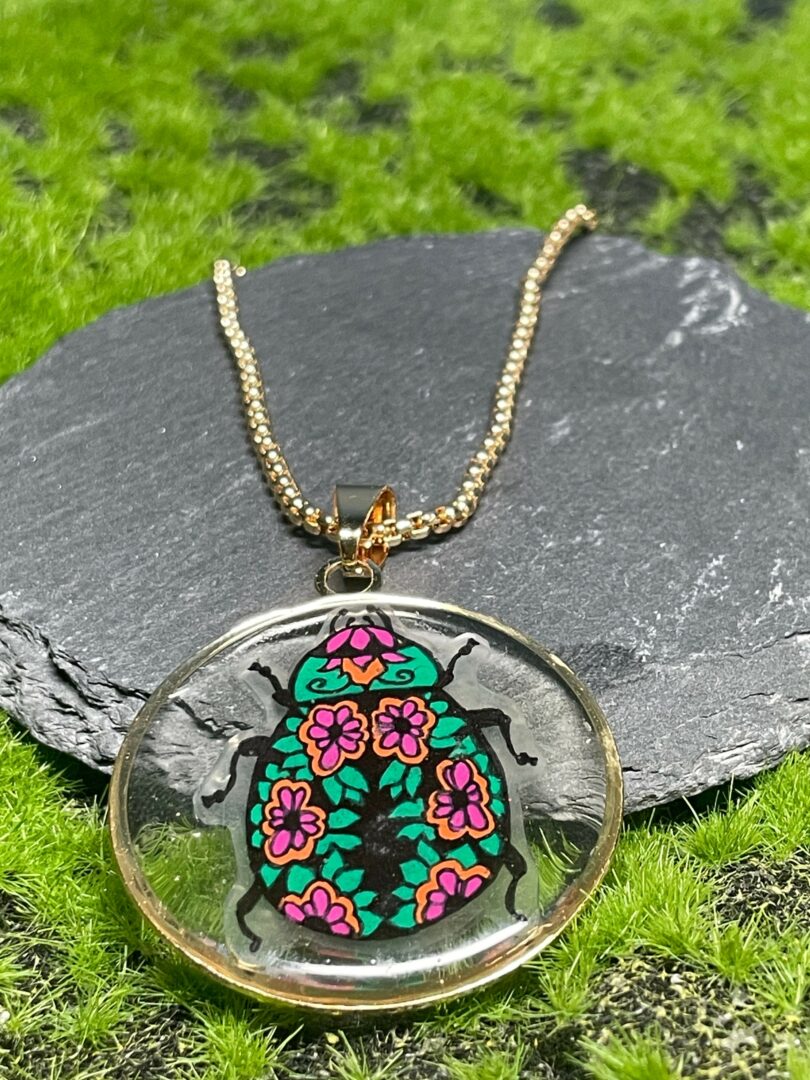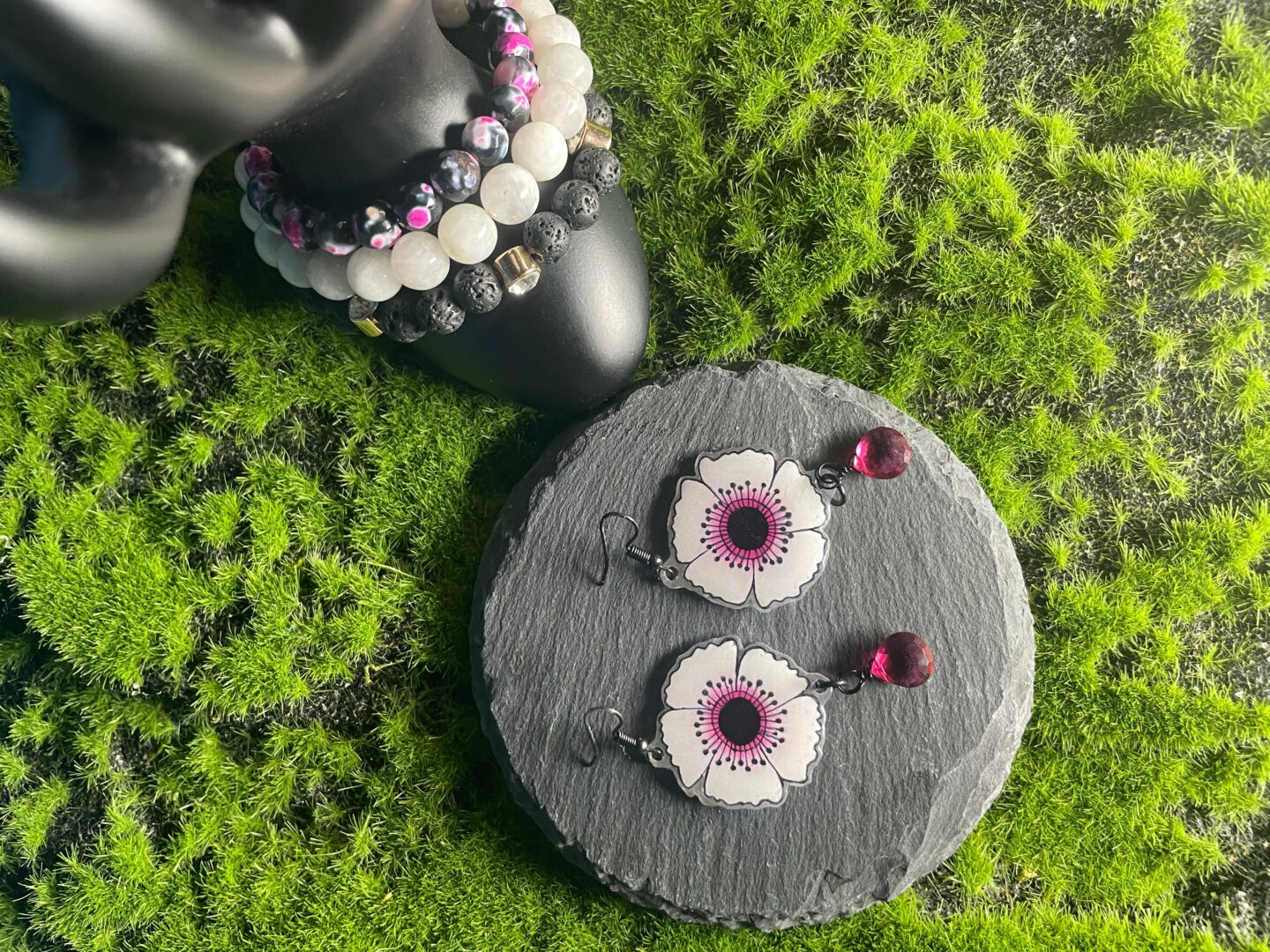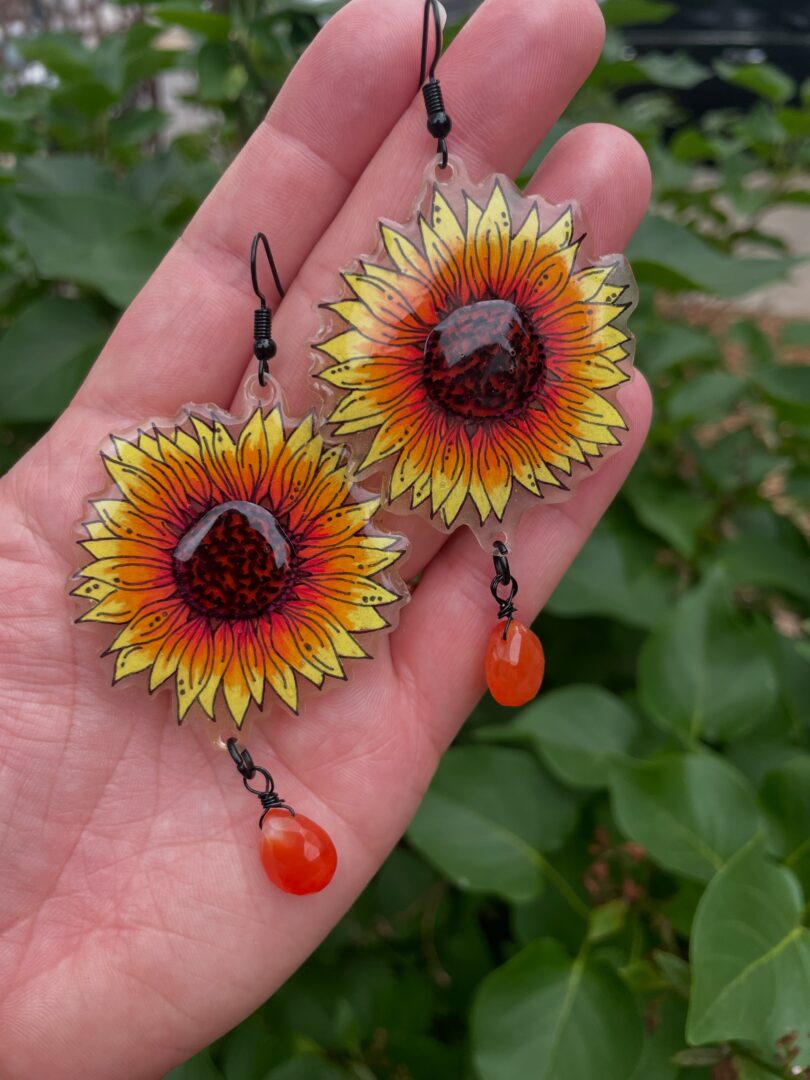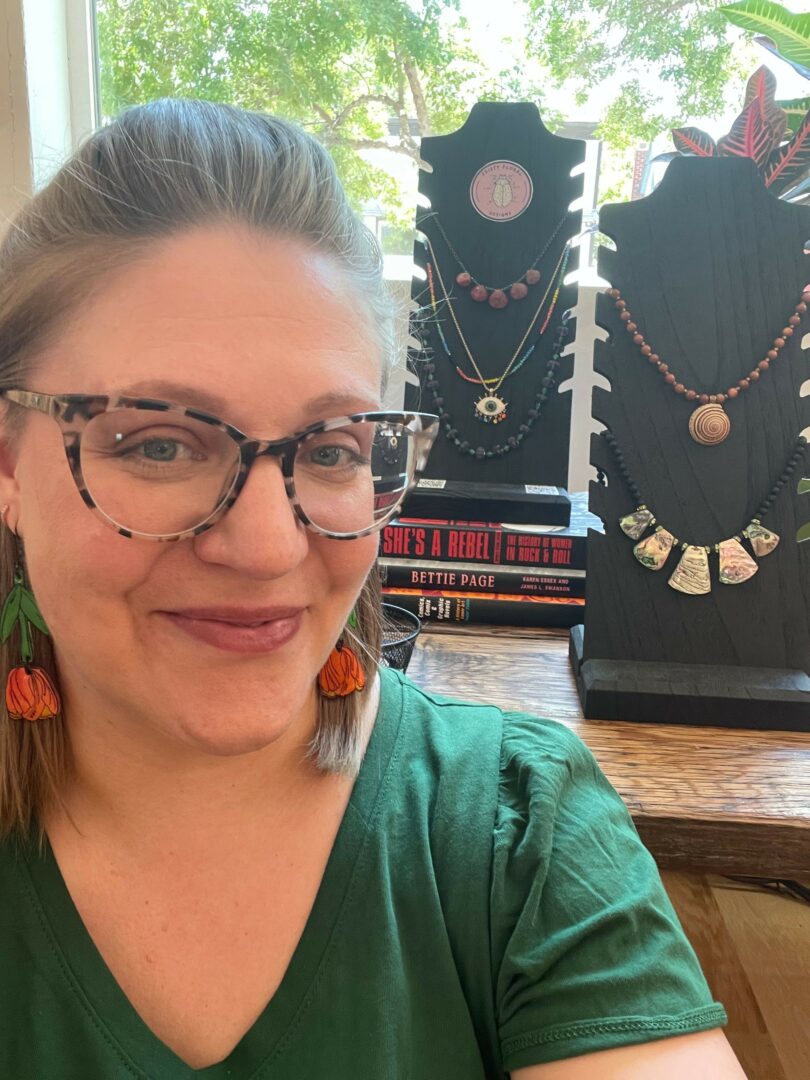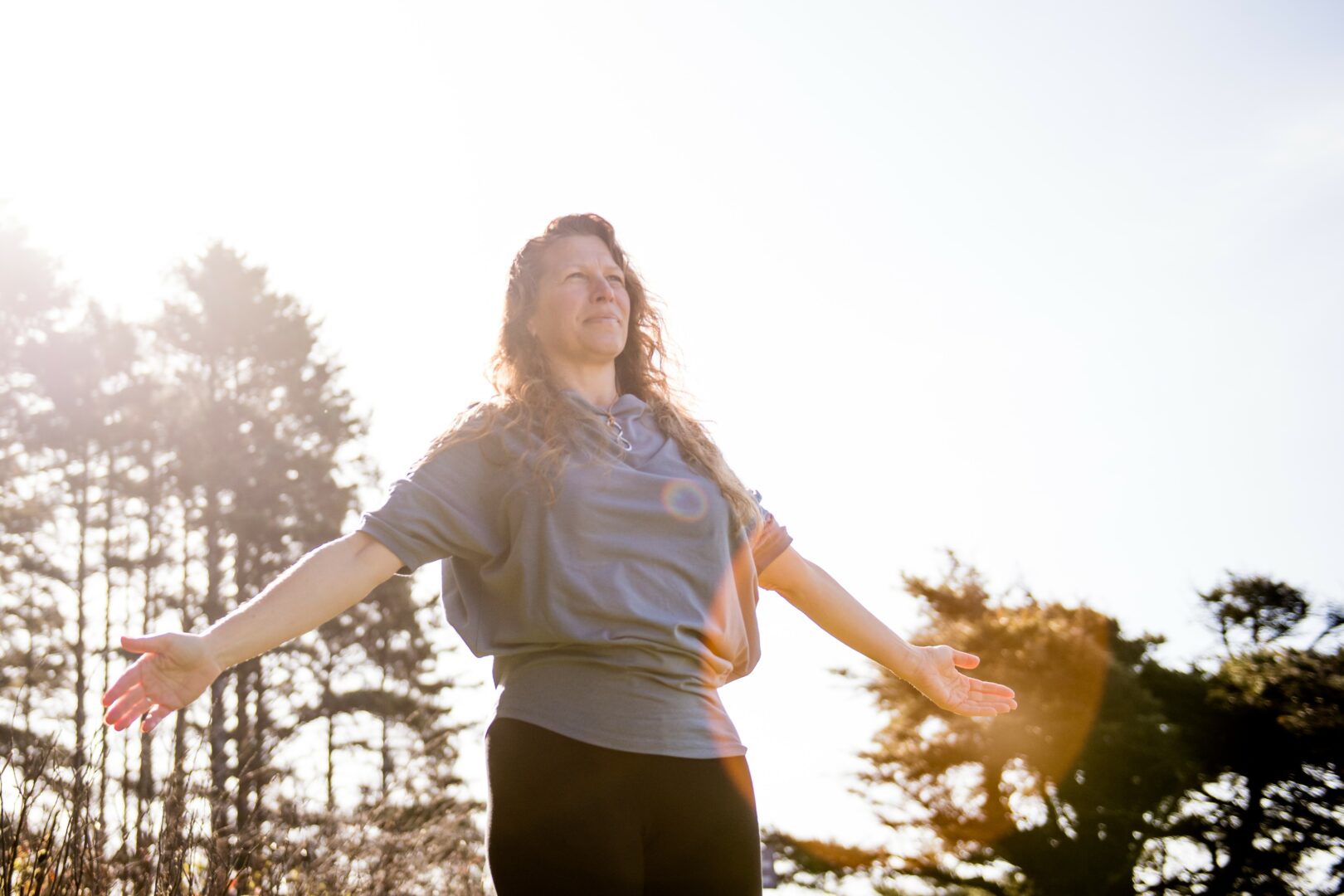We’re excited to introduce you to the always interesting and insightful Katie Brown. We hope you’ll enjoy our conversation with Katie below.
Katie, so great to be with you and I think a lot of folks are going to benefit from hearing your story and lessons and wisdom. Imposter Syndrome is something that we know how words to describe, but it’s something that has held people back forever and so we’re really interested to hear about your story and how you overcame imposter syndrome.
For a long time, I didn’t realize that imposter syndrome was what I was feeling — I just assumed that without a formal art education or a consistent body of “sellable” work, I wasn’t a real artist. Growing up, I spent a lot of time sketching and experimenting with materials. I took the occasional class in metalsmithing or ceramics, but I was always more focused on the process than the finished product.
I started making jewelry at a young age and loved the hunt for materials as much as the act of making. After college, I worked primarily in art education and community art projects. At the time, I identified more as an educator and community builder than as an artist with finished works or a defined medium.
But over time, especially working with beads and found objects, the process of creation turned quickly into tangible, wearable pieces. I wasn’t consciously building a collection, but one day I realized — I had. And when people began buying pieces right off my body, I started to see that all those years in the studio, in classrooms, and just making things for the love of it had given me a strong foundation — even without traditional training.
Now, seeing my work in galleries and having the opportunity to connect with the people who wear it, I no longer question whether I belong in the art world. The idea that I was “pretending” has fallen away, because I’ve come to understand that being an artist is as much about showing up for the process as it is about the outcome.
Let’s take a small detour – maybe you can share a bit about yourself before we dive back into some of the other questions we had for you?
I launched my jewelry line, Feisty Floral Designs, in the spring of 2024 after a commitment to re-invest in myself as an artist. Like so many people, I struggled with creativity through the pandemic. The act of balancing a career, marriage, and motherhood through isolation meant my artistic pursuits took a back seat while much of my creativity went into survival and caregiving. Now, I’m intentionally stepping back into my creative practice with renewed focus. My work is shaped by a wide range of influences—equal parts nostalgia, nature, and bold graphic design.
Growing up in the Los Angeles suburbs in the late ’80s and early ’90s, I was surrounded by the bright, playful aesthetic of shows like Saved by the Bell and Jem and the Holograms. Accessories were big, playful, and full of personality. My mother, also an artist, kept a bookcase full of art history, botanical illustration, and gardening books. I spent countless hours poring over the works of Charley Harper, Egon Schiele, Art Deco designs, and Maria Sibylla Merian’s detailed studies of butterflies.
In college, my interests expanded into bold graphic styles—from Sailor Jerry tattoos and block prints to riot grrrl zines, album covers, and grunge-era poster art. I’ve always been drawn to strong visual contrasts and statement pieces: chunky bracelets, textured necklaces, oversized earrings. But I also dislike the physical weight that often comes with large-scale jewelry.
While crafting with my daughter one afternoon, I rediscovered Shrinky Dinks—and realized that the surface had a similar tooth to high-quality art paper. I began experimenting with detailed illustrations that could be drawn large, then shrunk down to create intricate, lightweight pieces. I use highly saturated colors—often with olive and acid undertones—and pair the hand-drawn elements with semi-precious stones, especially ones that have been heat-treated to achieve vibrant hues.
This medium allows me to merge my love of illustration and pop culture with my passion for upcycling. I source vintage costume jewelry from thrift stores and estate sales, deconstructing and reworking pieces into new, more delicate designs. Many of my pieces are one-of-a-kind, and while I may recreate certain styles, each item is hand-colored—ensuring that no two are ever exactly alike.
I especially love creating custom pieces for collectors with niche interests or meaningful imagery. Feisty Floral Designs is about celebrating individuality through color, memory, and play—and finding the sweet spot where maximalism meets wearability.
Looking back, what do you think were the three qualities, skills, or areas of knowledge that were most impactful in your journey? What advice do you have for folks who are early in their journey in terms of how they can best develop or improve on these?
The first would have to be resourcefulness. So much of my work has come from using what’s around me — beads, found objects, discarded materials — and finding new value in them. That mindset of creating with what’s available has shaped not just my aesthetic, but my approach to problem-solving and making art feel accessible.
The second is collaboration and community-building. My background in community art taught me the power of shared space and creative exchange. Working alongside others helped me learn how to trust the process, stay open to feedback, and remember that art doesn’t have to exist in a vacuum — it is relational and responsive.
And lastly, I’d say a love of experimentation. As children, we’re so close to the source of creative energy – unburdened by judgment or outcome. Over time, self-doubt and perfectionism tend to creep in. But the years I’ve spent making art alongside children have helped me stay open — to mess, to change, to discovery. I’ve learned to work with what shows up, rather than forcing a result. I often return to this line from Rainer Maria Rilke: “May what I do flow from me like a river, no forcing and no holding back, the way it is with children.” That spirit of play and presence continues to guide me.
Okay, so before we go, is there anyone you’d like to shoutout for the role they’ve played in helping you develop the essential skills or overcome challenges along the way?
My husband, Michael Rosenzweig, has been incredibly supportive in helping me take my collection of work out into the world. He’s been instrumental in giving me the time and confidence to pursue this work seriously. He runs his own marketing agency, so beyond the day-to-day encouragement he’s also played a major role in helping me build my professional presence. He helped me transform my website into the polished, cohesive platform it is today, and he’s taught me how to navigate and grow my social media presence with confidence.
I’m also incredibly thankful to Eileen Kantor at Kantor & Company in Boulder, CO, who gave me my first opportunity to share my work with a wider audience. Her encouragement helped me take myself seriously as an artist and really step into that identity.
And I truly couldn’t be where I am now without Jonathan Hanst at Kaleidoscope Studio in Lafayette, CO, who invited me to join the artist collective and showcase my work in my first gallery setting. Through the collective, I’ve connected with other artists and had the invaluable opportunity to meet collectors face-to-face. Those relationships and experiences have been essential in helping me grow, both personally and professionally.
Contact Info:
- Website: https://feistyfloraldesigns.com/
- Instagram: https://www.instagram.com/feistyfloraldesigns/#
- Facebook: https://www.facebook.com/profile.php?id=61557283970878
- Other: [email protected]
